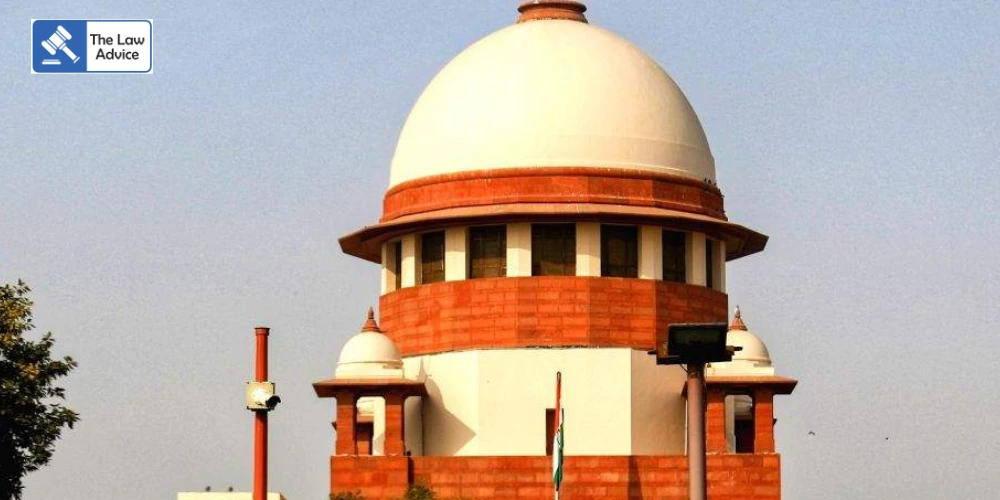The Supreme Court of India has agreed to consider a crucial constitutional question — whether medical and educational institutions established exclusively under the Special Component Plan (SCP) for Scheduled Castes are bound by the 50% ceiling on reservations applicable to ordinary institutions.
The matter arises from a controversial Allahabad High Court ruling that struck down 70% reservation for Scheduled Castes (SCs) in four Special Component Plan medical colleges in Uttar Pradesh. The High Court, relying on the precedent set in Indra Sawhney v. Union of India (1992), held that exceeding the 50% cap on reservations was unconstitutional.
Challenging the High Court’s decision, affected students approached the Supreme Court. A bench led by Chief Justice of India BR Gavai and Justice K. Vinod Chandran issued notice on the Special Leave Petition (Yuvraj Singh & Ors. v. State of U.P. & Anr., Diary No. 51735-2025).
During the hearing, the CJI pointed out that reservations for SCs in these colleges stood at 73%, prompting debate on whether this figure represented the true picture of overall admissions or merely a distorted snapshot of four colleges.
Appearing pro bono, senior advocate Dr. G. Mohan Gopal argued that the High Court failed to view the admissions structure holistically. He submitted that across the state’s medical admissions, SC representation worked out to only around 24–25%, once the entire pool of colleges and transferability of seats were factored in.
Why Special Component Plan Matters
The Special Component Plan (SCP) was launched in 1979, under Article 46 of the Constitution, to advance the educational and social upliftment of Scheduled Castes and Scheduled Tribes. It created targeted schemes such as exclusive hostels, scholarships, and dedicated universities.
• In 1986, Parliament established the Babasaheb Bhimrao Ambedkar University (BBAU), Lucknow, as a central university for SC/ST advancement.
• In 2007, the Indira Gandhi National Tribal University (IGNTU), Amarkantak, was set up to focus on tribal communities.
• Following the Planning Commission’s recommendations, several medical colleges under SCP were created, including the four Uttar Pradesh institutions at Ambedkar Nagar, Kannauj, Jalaun, and Saharanpur, where 70% of seats were earmarked for SC students.
These colleges were funded under the Special Central Assistance to Scheduled Caste Sub-Plan (SCA to SCSP), now renamed the Development Action Plan for SCs (DAPSC). Central norms require these funds to be used solely for the welfare of the Scheduled Caste community.
Petitioners’ Arguments
The petitioners stressed that the High Court misapplied the 50% ceiling principle to institutions specifically designed for SC upliftment. They argued that Indra Sawhney dealt with reservations in general institutions, not with colleges created solely for marginalized communities under constitutional directives.
The plea warned of a “dangerous precedent” if the judgment were upheld:
• It would threaten not just the four UP medical colleges but also similar SCP institutions in Karnataka, Telangana, Andhra Pradesh, and Tamil Nadu.
• It could potentially endanger other exclusive schemes such as special hostels, scholarships, and even central universities like BBAU and IGNTU.
• It would erode decades of affirmative action, undermining the constitutional vision of substantive equality under Articles 15(4), 15(5), 29, and 46.
The petition urged the Supreme Court to settle the law and clarify that special institutions created for disadvantaged groups are not subject to the 50% reservation cap that applies to mainstream educational spaces.
Broader Implications
The case raises a fundamental question: Can the State establish exclusive educational institutions for Scheduled Castes and Tribes with reservation exceeding 50%, given their unique constitutional mandate?
If the Supreme Court upholds the High Court’s reasoning, experts caution it could shrink opportunities for marginalized students, particularly in professional education, and open the floodgates for litigation against every SC/ST-targeted institution in the country.
If, however, the Court rules in favor of the petitioners, it would reaffirm the principle that affirmative action may justifiably exceed 50% when institutions are created under Article 46 for specific communities.
The Supreme Court’s ruling is likely to have far-reaching implications not only for reservation policy but also for the future of targeted welfare institutions in India.
